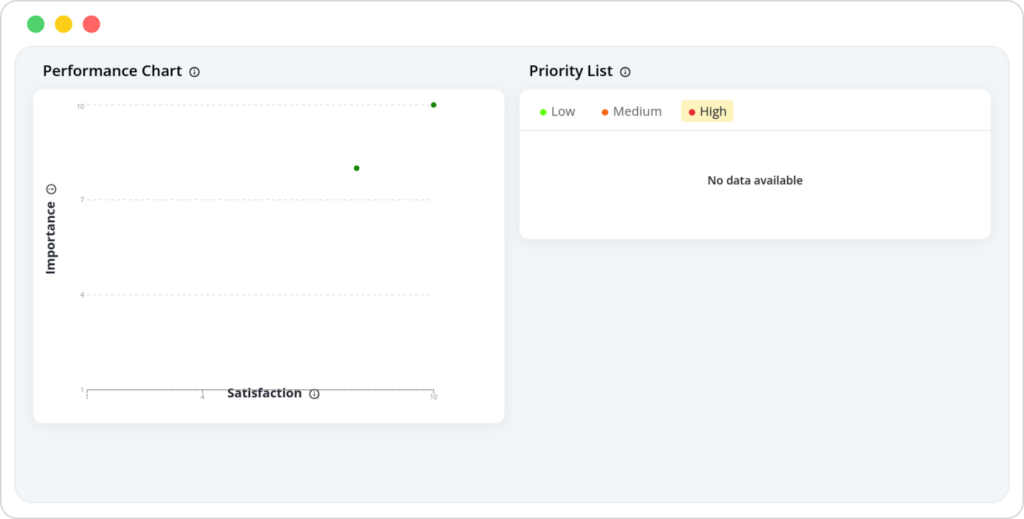Hands-On Discovery. We don’t hide behind
salespeople to share a demo
Try out a few steps of our software product through the interactive demo below
ONE single truth,
accessible to everyone who needs to.
Collect different feedback sources and distribute to different (external) teams
Centralize Different Sources
Using multiple evaluation methods helps to get a clearer picture of the satisfaction and performance. It's like putting together different pieces of a puzzle to see the full image.
Better Insights: Mixing different methods means more reliable results.
Complete View: See all sides of your business, from customer happiness to how well your operations are running.

Collaborative Data: Blending Internal and External Feedback for Comprehensive Analysis
Combining evaluation metrics from both internal and external teams offers a comprehensive understanding of your business. It brings together varied perspectives, ensuring a balanced view of performance and opportunities.
All-Around Feedback: Internal teams offer insights from within the company, while external teams provide a customer or market viewpoint.
Unified Business Analysis: Merging these diverse sources leads to a more complete and accurate assessment of business health and strategy.
Discover your single truth of feedback
It is the base for running a stable business
Effective measurement of customer satisfaction in B2B evaluations involves utilizing methods like surveys, interviews, and feedback analysis. By gathering insights from various sources, such as surveys of internal and external teams, customer support tickets, and direct feedback, businesses can assess customer satisfaction levels accurately.
Key metrics for B2B customer evaluations often include satisfaction scores on customer-specific variables, customer retention rates, net promoter score (NPS), and soft variables. These metrics provide valuable insights into the overall health of customer relationships and business growth potential.
Improving customer retention rates in B2B evaluations involves focusing on customer satisfaction, personalized support, and effective account management. By addressing customer pain points, providing exceptional experiences, and offering tailored solutions, businesses can enhance customer retention and loyalty.
Aligning B2B evaluations with customer needs and goals requires understanding customer expectations, pain points, and desired outcomes. By collecting and analyzing customer feedback, businesses can tailor their evaluations to address specific needs and provide valuable insights for mutual success.
Best practices for B2B evaluation programs include establishing clear objectives, selecting appropriate evaluation methods, capturing feedback across multiple touchpoints, analyzing data effectively, and incorporating actionable recommendations. Regularly reviewing and adapting evaluation strategies based on insights ensures continuous improvement.
Leveraging B2B evaluation insights involves translating data into actionable strategies. By identifying areas for improvement, recognizing upselling opportunities, and addressing customer pain points, businesses can drive growth, enhance customer satisfaction, and ultimately increase revenue.

